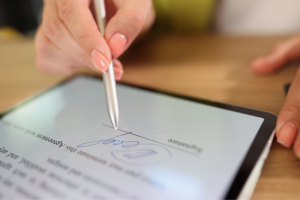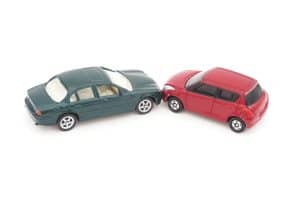
- The Savvy Promise
At Savvy, our mission is to empower you to make informed financial choices. While we maintain stringent editorial standards, this article may include mentions of products offered by our partners. Here’s how we generate income.
In this article
Transferring the ownership and registration of a car is a process that varies depending on which Australian state or territory you live in. It’s important to know what steps to take when buying or selling your car in terms of transferring the vehicle registration, as well as what fees you may have to pay, so familiarise yourself the process in your state right here in Savvy’s comprehensive guide.
How to transfer car registration and ownership in every state and territory
- Standard registration fee of $46.20
- Late transfer fee of $124.60 (if transfer is applied for more than 14 days after the vehicle was acquired)
- Fee of $106.00 to register vehicles not previously registered in the ACT
- Fee of $53.80 to re-register vehicles previously registered in the ACT
Transfers of vehicle registration in New South Wales must be completed within 14 days of acquiring your vehicle. This can be done online, provided the circumstances meet Service NSW’s requirements, namely that you’re buying a car registered in the state and hold a NSW driver’s licence.
A $37 fee applies for transferring the vehicle’s registration to your name, while a fee of $172 is charged if you fail to do so within the first 14 days after you acquire your vehicle.
Transferring registration as a seller requires you to complete a NOD form as soon as possible so the buyer can complete the process on their end. This can also be submitted online under most circumstances but can also be done in person at a Service NSW Centre or delivered via post.
You can find out more information about transferring car registration in NSW here.
- Confirm whether your vehicle requires an inspection or compliance check
- Fill out the R11 application to register a vehicle, which includes providing proof of ownership, identity and address, as well as a roadworthy inspection report (if required)
- Submit your application in person at an Motor Vehicle Registry (MVR) office and pay all required fees, including for number plates, stamp duty and registration
- You’re transferring the registration of a vehicle already registered in Queensland to one person only
- The seller of the vehicle has already submitted a registration transfer application
- You hold a Queensland driver’s licence or customer reference number
- You aren’t applying for a registration exemption or concession or an exemption from providing a safety certificate or paying the transfer fee
If you’re purchasing a vehicle registered in SA, its registration must be transferred to you within 14 days. This can be done online via your mySAGOV account (unless it doesn’t qualify for online transfer, such as if it’s unregistered or registered in another state) or in person at Service SA or via post by completing the required transfer form.
You’ll be required to pay a $31 registration fee and stamp duty on your car. If this isn’t completed within 14 days, you’re liable to pay a $99 late transfer fee.
If you’re selling your vehicle, you’ll need to lodge a NOD with Service SA as soon as possible. The available processes for submitting this are the same as for buyers.
You can find out more information about transferring car registration in South Australia here.
- Vehicle registration number and VIN or Chassis number
- Surname of both the buyer and seller (or the name of any organisation involved)
- Date of purchase
- Whichever is higher out of the purchase and market price of the vehicle
- Tasmanian driver’s licence numbers of both parties (or Motor Registry CIN for dealers and organisations)
- Card details to pay all required costs
- The seller of the car is yet to submit the NOD to your myVicRoads account
- You’re eligible to receive an exemption from either a roadworthy certificate or motor vehicle duty
- The vehicle is being purchased on behalf of an organisation
- Complete an MR9 form signed by both you and the seller
- Ensure the car is fitted with a Government-approved immobiliser and obtain a fitment of immobiliser declaration form (if possible)
- Submit your completed forms alongside proof of identification and age
- Receive an invoice for vehicle licence duty and a $20.40 transfer fee after your vehicle transfer form is received
All information, including processes, documentation requirements and fee costs, is correct as of 8 April 2024.
How do I transfer ownership if I buy a car from another state?
Buying a car interstate in Australia can be a great way to find the car you want – but there are some additional steps involved in the purchase process. Here's what you need to do:
Check state requirements: begin by researching the specific requirements for transferring ownership of a vehicle from another state in Australia. Each state and territory has its own rules and regulations regarding vehicle transfers, so make sure you understand what's required in both the state where the car is currently registered and the state or territory where you reside.
Look at temporary permits: if you plan to drive the car back yourself, you might need to organise an unregistered vehicle permit from your state’s transport department to provide coverage while transporting the vehicle.
Have your car inspected: you may be required to have the vehicle officially inspected for a fee. The vehicle inspection report will assess if your vehicle is roadworthy and complies with safety standards.
Register your vehicle: you will have a set amount of time to register your vehicle in your home state or territory. This varies depending on where you are – some states give you up to three months to register your car while others such as Queensland require registration to be completed within 14 days.
Can I transfer ownership if my car is under finance?
You can transfer ownership of a car even if it's under finance – in other words, you still owe money on your car loan – but the process can be a bit more complicated. When a car is still under finance, the lender technically owns the vehicle until the loan is fully paid off. To transfer ownership, you typically need to involve the lender in the process. Here’s how it usually works:
- Contact the lender: tell your lender about your intention to transfer ownership. This step will help you figure out whether you need to fully pay off the loan before selling the vehicle or if the buyer can handle the payment directly to your lender. Your lender will also provide you with a payout figure, which includes the total amount required to settle your debt.
- Keep the buyer informed: transparency is key when dealing with potential buyers. Clearly communicate the situation and your plans regarding the remaining debt, keeping in mind that they can always check whether the car is under finance.
- Settlement of finance: if the buyer is taking over the finance, they'll need to apply for a new loan or take over the existing loan if approved. The lender will assess the buyer's financial situation and determine if they're eligible.
- Transfer ownership: complete all necessary paperwork to transfer ownership to the buyer.
It's important to follow the legal and financial procedures carefully when transferring ownership of a car that is under finance to ensure the process is both smooth and legally compliant.
Can I buy or sell an unregistered vehicle in Australia?
You can both buy and sell an unregistered car in Australia. However, there are some important considerations to keep in mind:
Buying an unregistered car:
- Check the vehicle's condition thoroughly, including its mechanical and structural aspects.
- Verify the vehicle's ownership and history to ensure it is not stolen or encumbered.
- Ensure that you obtain a temporary permit or unregistered vehicle permit before transporting the vehicle.
Selling an unregistered car:
- Disclose the vehicle's unregistered status to potential buyers.
- Provide accurate information about the vehicle's condition, history, and any outstanding finance.
- Complete all necessary paperwork, including transfer of ownership forms, to ensure a smooth and legal transaction.
Keep in mind that before a vehicle can be legally driven on the road, it must be registered.
How do I check a vehicle’s registration status?
You can easily check a vehicle’s registration for free on your state or territory’s transport department website. This will give you information such as the registration expiry date, the status of the registration and potentially information about the car’s compulsory third party (CTP) insurance. All you will need is the vehicle’s registration plate number. Here’s where you can check a car’s registration for each state and territory in Australia:
ACT: https://rego.act.gov.au/regosoawicket/public/reg/FindRegistrationPage?0
NSW: https://www.service.nsw.gov.au/transaction/check-a-vehicle-registration
NT: https://nt.gov.au/driving/rego/existing-nt-registration/rego-check
QLD: https://www.service.transport.qld.gov.au/checkrego/public/Welcome.xhtml
TAS: https://www.transport.tas.gov.au/MRSWebInterface/public/regoLookup/registrationLookup.jsf
WA: https://online.transport.wa.gov.au/webExternal/registration/
Can I keep my number plate when I sell my car?
In Australia, number plates are typically transferred with the vehicle during the car sale and registration transfer process. However, you may be able to keep personalised and custom number plates – though be aware that you may be charged additional fees to keep your plate. You will also typically need to get a general issue number plate for the car before you sell or trade it in. For more information, visit your state or territory’s transport department website.
Do I need to pay stamp duty when buying a used car?
In Australia, motor vehicle stamp duty applies to the purchase of both new and used cars. Stamp duty is a tax imposed by state or territory governments when you buy a car and is calculated based on the vehicle's value.
Stamp duty is one of the additional costs associated with buying a car. The amount of stamp duty payable can vary depending on several factors, including the vehicle's value, type and intended use, as well as the state or territory the car is registered in. Failure to pay the required stamp duty can result in penalties and legal consequences.
It's essential for car buyers to understand their obligations regarding stamp duty and factor it into their budget when purchasing a vehicle. Information on stamp duty rates and regulations can typically be found on state or territory government websites.
Did you find this page helpful?
Author
Adrian EdlingtonReviewer
Bill TsouvalasPublished on August 10th, 2023
Last updated on May 3rd, 2024
Fact checked
This guide provides general information and does not consider your individual needs, finances or objectives. We do not make any recommendation or suggestion about which product is best for you based on your specific situation and we do not compare all companies in the market, or all products offered by all companies. It’s always important to consider whether professional financial, legal or taxation advice is appropriate for you before choosing or purchasing a financial product.
The content on our website is produced by experts in the field of finance and reviewed as part of our editorial guidelines. We endeavour to keep all information across our site updated with accurate information.
Approval for car loans is always subject to our lender’s terms, conditions and qualification criteria. Lenders will undertake a credit check in line with responsible lending obligations to help determine whether you’re in a position to take on the loan you’re applying for.
The interest rate, comparison rate, fees and monthly repayments will depend on factors specific to your profile, such as your financial situation, as well others, such as the loan’s size and your chosen repayment term. Costs such as broker fees, redraw fees or early repayment fees, and cost savings such as fee waivers, aren’t included in the comparison rate but may influence the cost of the loan. Different terms, fees or other loan amounts may result in a different comparison rate.









